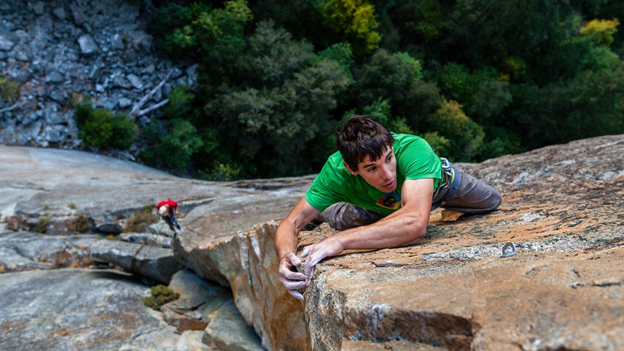
Stress and Chronic Pain (Part 2)
This is a three-part series about the relationship between stress and chronic pain. This series was inspired by what happened to me last week, when I re-watched the movie FREE SOLO, where Alex Honnold, climbs a 3000 foot cliff (“El Capitan” in Yosemite National Park) with no ropes or safety equipment. Even though I knew he would get safely to the top, by the time the movie was over, I was wincing from pain in my shoulders brought on by stress. You can read Part 1 here.
It’s always an interesting moment in the movie when they slide Alex Honnold into an MRI machine to scan his brain. The medical technician who is looking at the brain scan tells Alex – that even though they have shown him all these frightening images - his amygdala (the place in the brain where the stress response begins) shows absolutely NO sign of activation.
At least from my perspective, Alex has a brain defect: His amygdala isn’t functioning properly. As the movie explains, everyone who has reached Alex’s level of expertise in the sport of free soloing (climbing mountains with no ropes or safety equipment) has died. Now that’s more than enough stimulating information for me to fully activate my amygdala, and that’s why my shoulders tense up whenever I watch this movie, even though I KNOW he’s going to get to the top without dying. Perhaps my amygdala is just as defective as Alex’s but at the opposite end of the spectrum: Just the thought of doing what he’s doing is enough to trigger it.
Apparently even Alex has some healthy nervousness while climbing, at least in the difficult places. I guess that’s why he’s survived where others haven’t. And his defense against this nervousness is something we CAN ALL learn from.
As we see in the movie, Alex practices the climb up El Capitan numerous times – WITH ropes and safety equipment, trying to navigate the most challenging places without falling. In the practice sessions, if he falls, the ropes catch him, and he doesn’t die.
Eventually he develops a reliable set of moves to get him through these difficult places without falling. He tests his routine over and over again. He says he wants to drill those moves into his unconscious mind. ONLY then does he attempt to do the whole climb with NO safety equipment.
Brain scientist, Joe LeDoux believes the amygdala is simply a “threat detector.” Alex’s amygdala doesn’t see threats where just about everyone else does, but he isn’t immune to threat, either. As LeDoux points out, it’s the prefrontal cortex (the PFC or executive center of the brain) that determines whether a threat is real or imaginary. By practicing the difficult parts of the climb over and over, Alex trains his PFC to NOT see these parts of the climb as threatening. And as a result, he is able to do something, no one else in the world can do.
So when he finally goes up the mountain with NO ropes or back-up equipment and all these cameras watching, he nails the climb. I guess if I watched the film several more times, I could train my overactive amygdala to calm down, too. We all enjoy a good scare (essentially subjecting ourselves to tolerable levels of stress) in order to distract ourselves from the challenges of everyday life. (And it’s why Alex climbs, too. He just needs greater levels of challenge than the rest of us.)
But if we want to “climb mountains” in our personal lives, without enduring crippling levels of stress, we would do well to follow Alex’s example of preparing ourselves for the most difficult parts of the climb, with lots of run-throughs and extra practice. In that way, we will not only circumvent the pain that goes with unrelenting stress, we eliminate that stress at the source, by training our PFC to NOT see the difficult places AS STRESSFUL and more as routine.
Alex has help with this goal, since his amygdala, just doesn’t fire quite as readily as most people’s. But in Alex’s case (and it can be true for us as well) practice makes perfect. He uses his PFC to take a warning signal from the Amygdala, and quiet it with his rigorous training. So getting to the top of El Capitan is just like performing at Carnegie Hall. They way we get there (without overwhelming levels of stress) is practice, practice, practice.
In part 3 we’ll talk about how to use mindfulness meditation to deal with chronic pain.





James Porter
Author